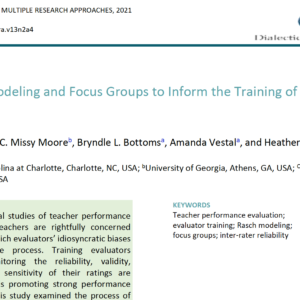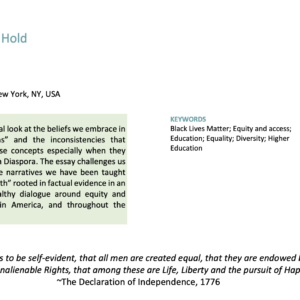13(2). 03. Beyond Identifying Emergent Themes in Mixed Methods Research Studies: The Role of Economic Indices: The Thematic Herfindahl-Hirschman Index and the Thematic Concentration Ratio
$30.00
Description
Author
Anthony J. Onwuegbuzie
Faculty of Education, University of Cambridge, England; Department of Educational Leadership and Management/Department of Educational Psychology, University of Johannesburg, Johannesburg, South Africa and Dialectical Publishing, LLC, Bloomington, IN, USA
Abstract
The formal use of the technique of quantitizing has made, and continues to make, a valuable contribution to the mixed methods research field, inspired by the groundbreaking first edition of Miles and Huberman’s (1984) book that was published during the height of the so-called paradigm wars of the 1980s. However, unfortunately, until very recently, the overwhelming majority of quantitizing has involved descriptive-based quantitizing, and scant attention has been paid to more advanced types of quantitizing, which include exploratory-based quantitizing, measurement-based quantitizing, and inferential-based quantitizing, as described by Onwuegbuzie (in press) and Onwuegbuzie and Johnson (2021). Yet, these forms of quantitizing help to enhance the quality of meta-inferences in mixed methods research studies, which, in turn, enhance the meaning-making process. With this goal of enhancing the meaning-making process in mind, the purpose of this current editorial has been to demonstrate how two economic indices, the Herfindahl-Hirschman Index and the Concentration Ratio, can help to contextualize emergent themes that have been subjected to descriptive-based quantitizing—yielding what I term as a Thematic Herfindahl-Hirschman Index and the Thematic Concentration Ratio. In particular, after describing in detail these two economic indices in a step-by-step manner, I use real data to illustrate how these indices not only can serve as additional descriptive-based quantitizing, but also can lead to exploratory-based quantitizing and inferential-based quantitizing.




